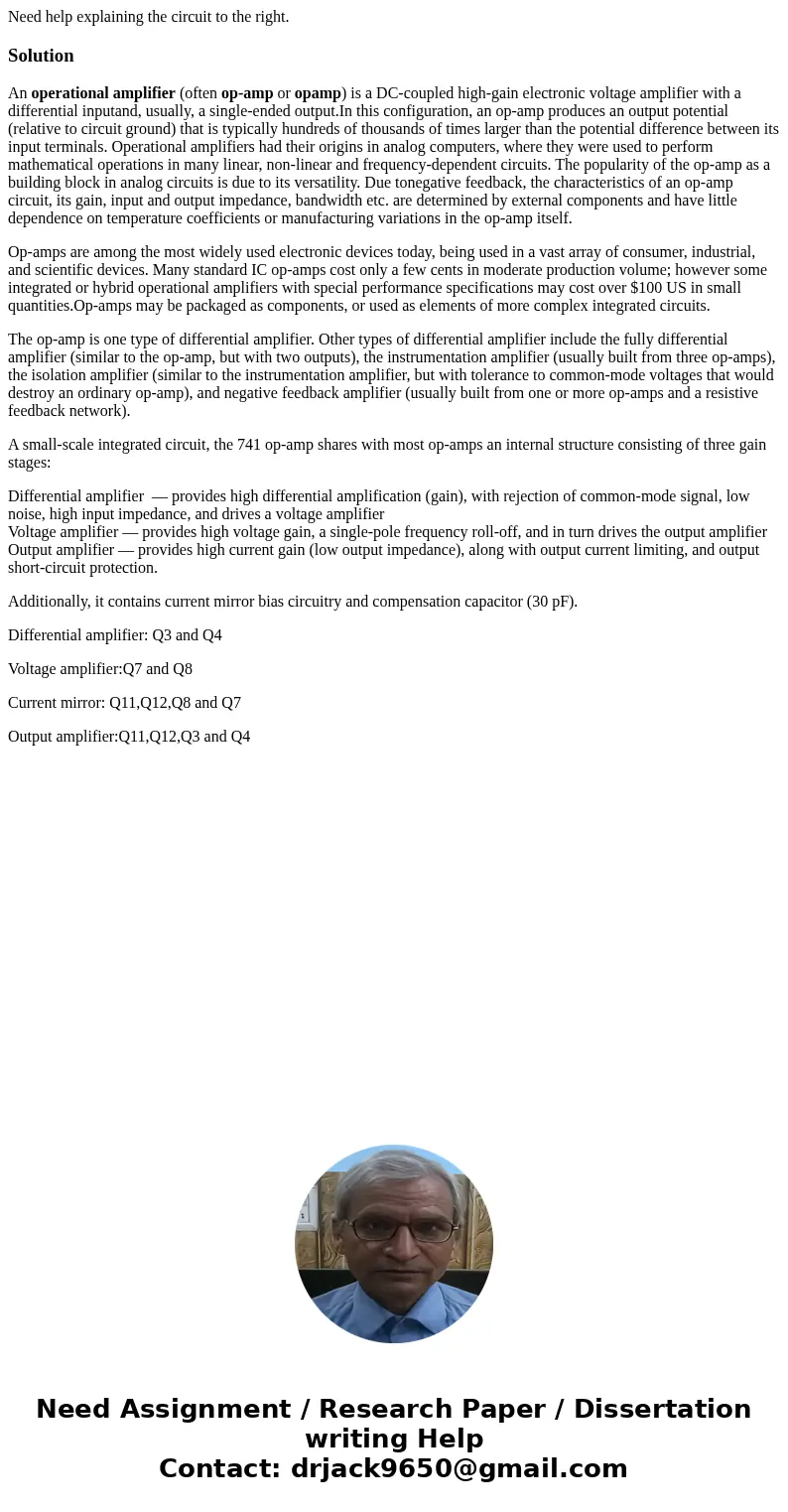Need help explaining the circuit to the rightSolutionAn oper
Need help explaining the circuit to the right.
Solution
An operational amplifier (often op-amp or opamp) is a DC-coupled high-gain electronic voltage amplifier with a differential inputand, usually, a single-ended output.In this configuration, an op-amp produces an output potential (relative to circuit ground) that is typically hundreds of thousands of times larger than the potential difference between its input terminals. Operational amplifiers had their origins in analog computers, where they were used to perform mathematical operations in many linear, non-linear and frequency-dependent circuits. The popularity of the op-amp as a building block in analog circuits is due to its versatility. Due tonegative feedback, the characteristics of an op-amp circuit, its gain, input and output impedance, bandwidth etc. are determined by external components and have little dependence on temperature coefficients or manufacturing variations in the op-amp itself.
Op-amps are among the most widely used electronic devices today, being used in a vast array of consumer, industrial, and scientific devices. Many standard IC op-amps cost only a few cents in moderate production volume; however some integrated or hybrid operational amplifiers with special performance specifications may cost over $100 US in small quantities.Op-amps may be packaged as components, or used as elements of more complex integrated circuits.
The op-amp is one type of differential amplifier. Other types of differential amplifier include the fully differential amplifier (similar to the op-amp, but with two outputs), the instrumentation amplifier (usually built from three op-amps), the isolation amplifier (similar to the instrumentation amplifier, but with tolerance to common-mode voltages that would destroy an ordinary op-amp), and negative feedback amplifier (usually built from one or more op-amps and a resistive feedback network).
A small-scale integrated circuit, the 741 op-amp shares with most op-amps an internal structure consisting of three gain stages:
Differential amplifier — provides high differential amplification (gain), with rejection of common-mode signal, low noise, high input impedance, and drives a voltage amplifier
Voltage amplifier — provides high voltage gain, a single-pole frequency roll-off, and in turn drives the output amplifier
Output amplifier — provides high current gain (low output impedance), along with output current limiting, and output short-circuit protection.
Additionally, it contains current mirror bias circuitry and compensation capacitor (30 pF).
Differential amplifier: Q3 and Q4
Voltage amplifier:Q7 and Q8
Current mirror: Q11,Q12,Q8 and Q7
Output amplifier:Q11,Q12,Q3 and Q4

 Homework Sourse
Homework Sourse